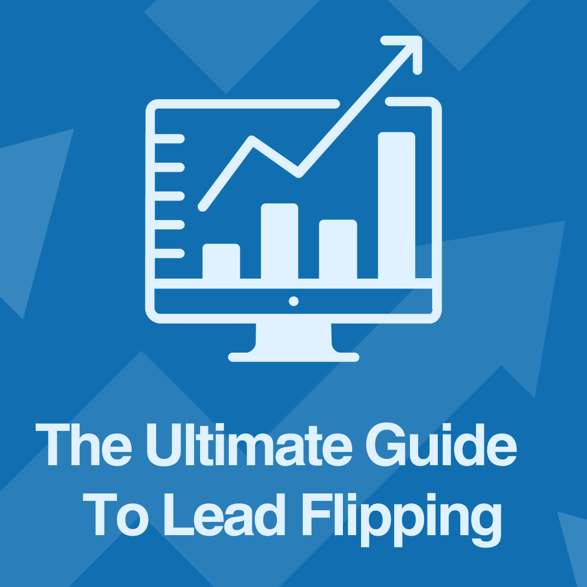Do you know companies that need more sales leads than their marketing currently provides? Are you looking for a new revenue stream without having to manage more ad campaigns? Consider working with other marketing professionals who generate leads and flip them to your clients.

Here is a deep dive into lead flipping, how to understand and implement this practice within your business, and some suggestions to add to your tech stack. Let's start at the beginning: what exactly is lead flipping, and how can you use it to benefit your business?
What Is Lead Flipping?
Lead flipping is buying, in some cases enhancing, and then selling leads for profit. It's like house flipping in real estate, where instead of properties, you're buying and selling potential customers to businesses they match with. The process starts with acquiring pre-qualified leads from various sources. These leads are then filtered, often with appended data to increase their value before being sold, or “flipped”, to other businesses at a profit.
How Do You Start Flipping Leads?
At the base level, to flip leads, you will need a quality and reliable source and a network of buyers.
Sourcing Leads
The first step in lead flipping is sourcing. You need to find a reliable third-party source or lead generation strategy that can provide you with relevant leads to your niche. The more quality sources, the better. You want to buy something other than junk leads. Vet your sources to see how they treat the leads you buy from them. Use a decoy contact, like those you can get from Assumed to fill out one of their forms.
Enhancing Leads
Once you have these leads, the flipping part comes into play. Flipped leads you can sell at a premium for their lead quality or their relevance to the buyer. Enhancing leads might involve:
- Verifying the information
- To ensure the leads are quality, you can use a quality checker or verification service. These services check to ensure the lead is not fraud, has the correct information, and assists in showing what their score is for quality.
- You can use third party services to append data to the lead and deliver it to the lead buyers with the rest of the lead details.
- Segmenting leads
- Let's say you bought a bunch of roofing leads. If you find out what location they are in, what type of job they need, or more specific details, you can sell these leads to buyers that fit their needs better. It's an easier sell when you can tell them exactly what the lead wants. This is true for any industry; having more specific details about them makes them more valuable for niche buyers.
- Nurturing leads
- Nurturing leads is keeping them "warm" by engaging with the lead to keep their interest. Using email campaigns, you can keep them interested and even bring 'cold' or 'aged' leads to the point where they're considered 'warm' or 'hot' again - like bringing leads back from the dead.
Selling Leads
The final step is to sell these leads. This is where your network comes into play. It would be best to establish connections with businesses that benefit from these enhanced leads and are willing to pay a premium. Be sure that your buyers are treating leads with respect, or it could come back to bite you. Seed your lists using decoy contacts to see what your buyers do with those leads. This industry is no longer a set-it-and-forget-it industry with all the upcoming regulations.
Best Practices for Lead Flipping
- Quality Over Quantity: Always prioritize the quality of leads over the sheer numbers. Better leads result in better conversion rates for the end buyer. If they are happy with the leads you provide, they will keep coming back.
- Understand Your Buyers: Know what your buyers are looking for. Tailor your lead flipping process to meet their specific needs.
- Stay Compliant: Adhere to data protection laws and regulations. Your lead-flipping practices need to be legal and ethical.
- Use Technology: Implement lead distribution and tracking systems to organize and enhance your leads efficiently. Route them to the correct buyers and take the manual part out.
Advanced Lead Flipping Strategies
Lead flipping can be complex, requiring a balance of intelligent sourcing, strategic enhancement, and effective selling. Using lead distribution software designed to automate tracking, distributing, and billing leads in real-time can automate and scale your lead-flipping tactics. Lead distribution systems like boberdoo can not only help you buy and sell your leads but also will tailor to your business and give you the tools to grow and maximize your profits.
In conclusion, lead flipping is a lucrative strategy when executed correctly. By understanding the process, employing best practices, and leveraging the power of lead distribution, you can transform how you handle leads and propel your business to new heights.
